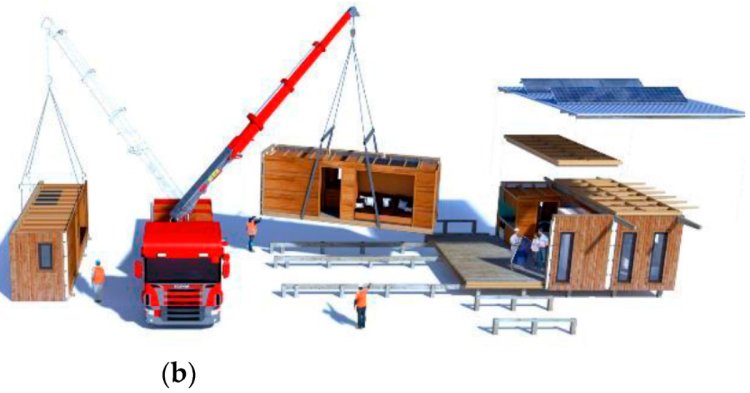Prefabrication in Construction: A Historical Perspective and Modern Applications
Discover the evolution of prefabrication in construction, its historical roots, and modern applications that enhance efficiency and sustainability.

Prefabrication has transformed the construction industry, offering a faster, more efficient, and cost-effective way to build structures. But how did it all begin, and where is it headed? The evolution of prefabrication dates back centuries, proving its resilience and adaptability in meeting the demands of modern construction.
Today, prefabrication manufacturers are at the forefront of innovative building solutions, ensuring high-quality production with minimized waste and reduced labor costs. To explore cutting-edge prefabrication services, check out Connective Consulting Group. As demand for sustainable and efficient construction methods grows, prefabrication is shaping the industry's future with precision-engineered components and streamlined assembly.
A Brief History of Prefabrication in Construction
The concept of prefabrication is not new. Civilizations throughout history have employed modular construction techniques to enhance efficiency and consistency.
Ancient and Early Uses of Prefabrication
-
Ancient Rome and Greece: The Romans pioneered precast concrete and modular stone structures, laying the foundation for modern prefabrication.
-
16th and 17th Century Europe: Prefabricated timber frames were shipped from England to American colonies, simplifying construction in remote locations.
-
19th Century Industrial Revolution: Prefabrication gained momentum with the rise of mass production, making it easier to build homes, factories, and even military structures quickly.
20th Century: Prefabrication’s Expansion
-
World War II: The need for rapid, cost-effective housing led to prefabricated barracks and homes for soldiers and war victims.
-
Post-War Boom: Prefabricated homes became popular, offering affordable housing solutions for growing populations.
-
High-Rise Buildings: The use of prefabricated steel and concrete components made skyscraper construction faster and more efficient.
Modern Applications of Prefabrication in Construction
With advances in technology, prefabrication has evolved into a sophisticated construction method widely used across various industries.
1. Residential Construction
Prefabricated homes are now a mainstream solution for fast, cost-effective, and sustainable housing. Modern modular homes boast innovative designs, energy-efficient materials, and customizable layouts.
2. Commercial and Industrial Buildings
Prefabrication is widely used for office buildings, warehouses, and retail spaces. These structures benefit from:
-
Faster build times
-
Lower labor costs
-
Reduced material waste
3. Healthcare and Educational Facilities
Hospitals, clinics, and schools utilize prefabrication for:
-
Quick expansion needs
-
Improved quality control
-
Enhanced energy efficiency
4. Infrastructure Projects
Bridges, tunnels, and public transportation hubs integrate prefabricated elements to:
-
Minimize construction disruptions
-
Improve safety and durability
-
Reduce overall costs
Benefits of Prefabrication in Modern Construction
1. Increased Efficiency and Speed
Prefabrication significantly reduces construction time by manufacturing components off-site, allowing for simultaneous site preparation and assembly.
2. Cost-Effectiveness
By minimizing labor, material waste, and on-site delays, prefabrication lowers overall project costs without compromising quality.
3. Improved Quality Control
Since prefabricated elements are produced in controlled environments, they undergo rigorous quality checks, ensuring consistency and durability.
4. Sustainability and Waste Reduction
Modern prefabrication techniques promote sustainability by:
-
Using eco-friendly materials
-
Reducing construction waste
-
Enhancing energy efficiency in buildings
5. Enhanced Safety
With fewer on-site construction activities, the risk of accidents and hazardous conditions is significantly reduced.
The Future of Prefabrication in Construction
As technology advances, prefabrication continues to revolutionize the construction industry. Emerging trends include:
1. Smart Modular Buildings
The integration of smart technology with prefabricated structures enables energy-efficient, automated, and adaptable buildings.
2. 3D Printing in Prefabrication
3D printing allows for precise, customized prefabricated components, further reducing construction time and costs.
3. Robotics and Automation
The use of robotics in prefabrication enhances precision, speeds up production, and minimizes human error.
4. Sustainable Prefabrication
With the rise of green construction, prefabrication will play a crucial role in building energy-efficient and eco-friendly structures.
Conclusion: The Evolution of Prefabrication Continues
From ancient civilizations to cutting-edge smart buildings, prefabrication has stood the test of time. As construction demands evolve, so will the technology and techniques behind prefabricated structures, ensuring a more efficient, sustainable, and cost-effective future.
What are your thoughts on prefabrication? Have you ever considered using it for a project? Share your insights in the comments below!
What's Your Reaction?



















